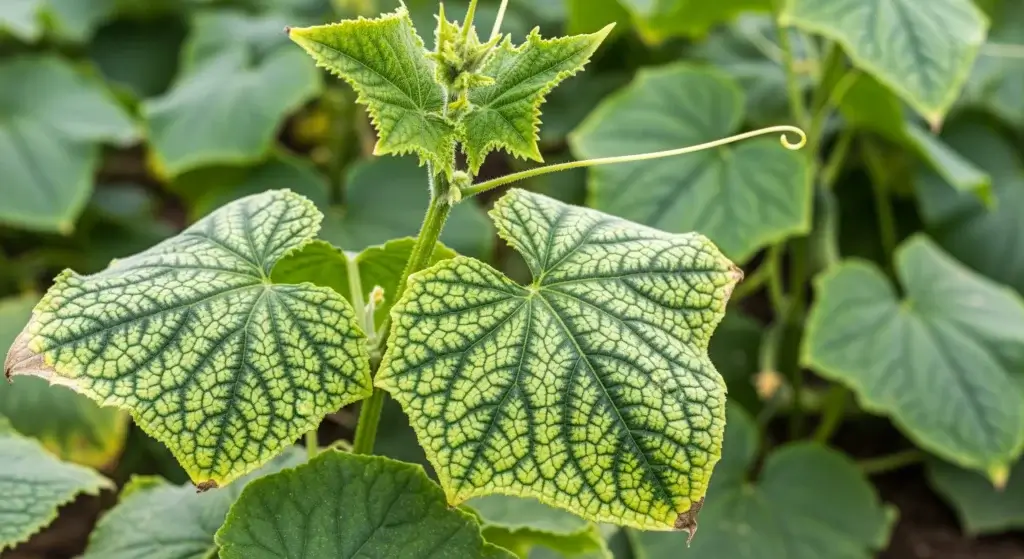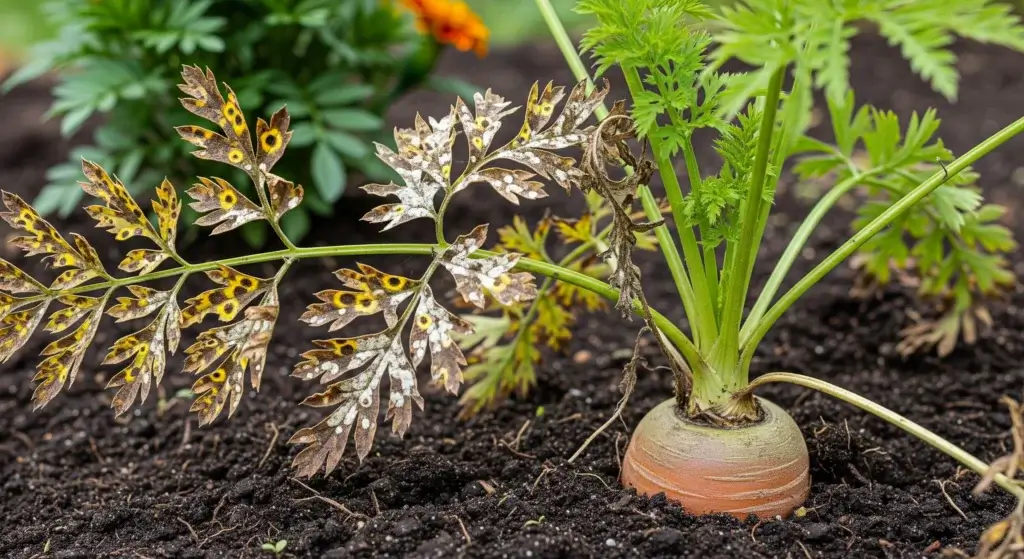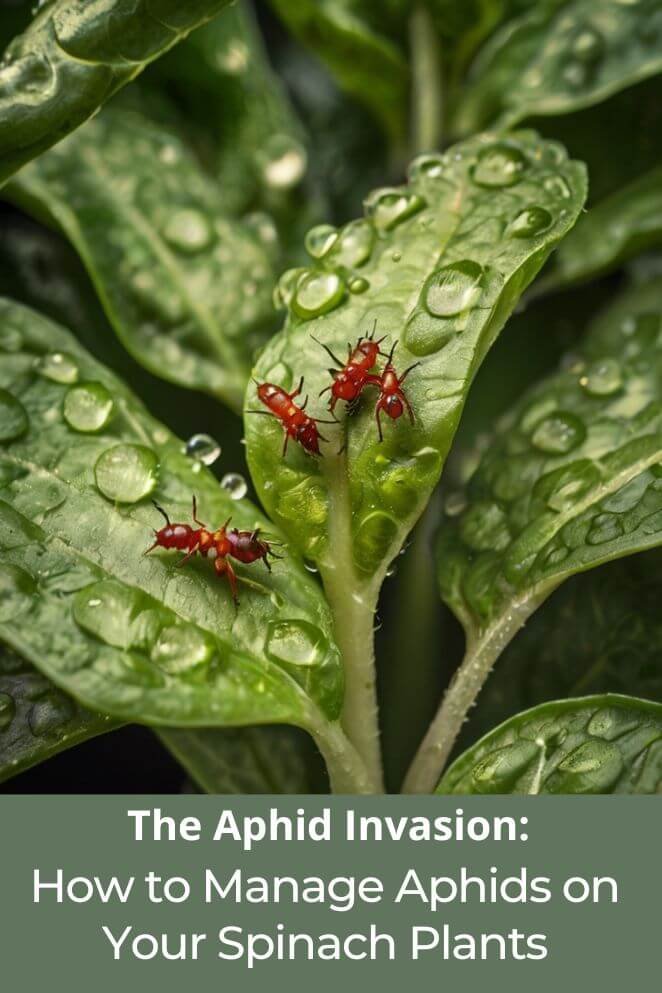
Aphids are tiny insects that feed on plant sap and can cause significant problems for your spinach plants.
These pests can stunt the growth of your spinach and even spread diseases.
Aphids are a common garden nuisance, and if you don’t address them quickly, they can seriously damage your crops.
Spinach, which grows best in cooler weather, is especially vulnerable to aphid infestations.
Identifying Aphids on Spinach
Aphids are small, soft-bodied insects, usually green, yellow, or black.
They cluster on the underside of spinach leaves, where they feed by piercing the plant’s surface and sucking out the sap.
This feeding process weakens the plant, leading to wilting, yellowing, and distorted growth.
One way to identify aphids is by looking for these clusters of tiny insects.
You may also notice a sticky substance called “honeydew” on the leaves, which aphids excrete while feeding.
Over time, this honeydew can attract ants and promote the growth of sooty mold.
- Small, pear-shaped bodies (1-4 mm)
- Soft, squishy texture
- Typically green, yellow, or black
- Often found in clusters on the undersides of leaves
- Presence of honeydew and sooty mold
Causes of Aphid Infestation
Several factors can contribute to an aphid infestation on your spinach plants.
Aphids thrive in mild temperatures and are more prevalent during spring and early summer when conditions are ideal for their rapid reproduction.
- Mild weather: Aphids reproduce more quickly in cooler weather, making spring and early summer the peak times for infestations.
- Overcrowded plants: Aphids are attracted to dense plantings, where there is less airflow, providing the perfect environment for them to multiply.
- Nutrient imbalance: Over-fertilization, especially with nitrogen, can cause lush, tender growth that attracts aphids.
- Nearby infested plants: Aphids can spread from nearby plants that are already infested, as they travel between crops in search of food.
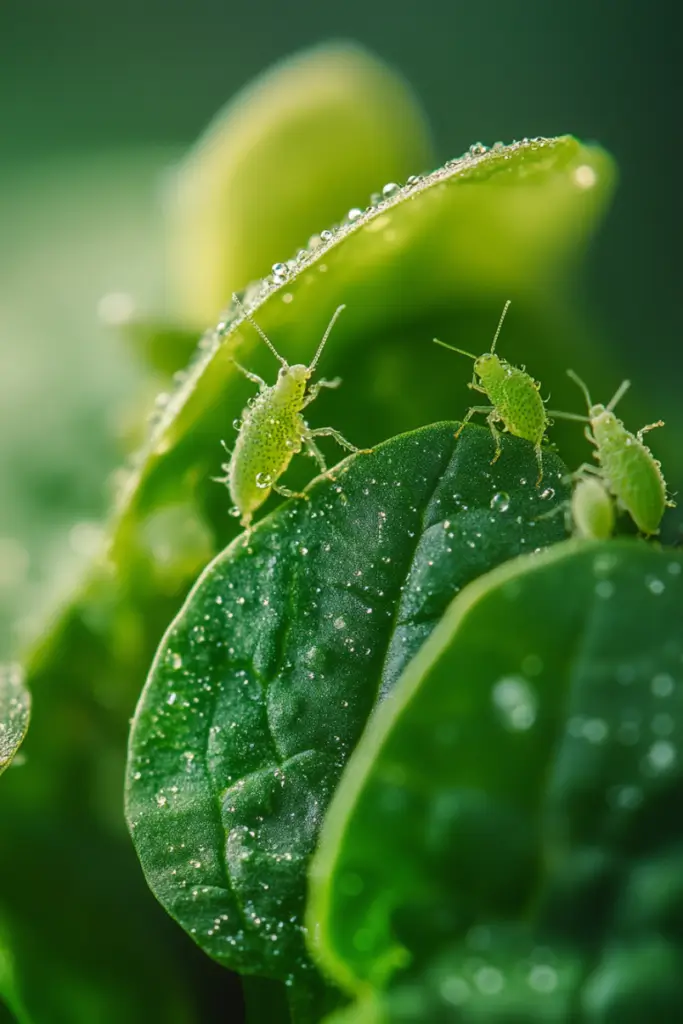
- Read also: Tips for Gardeners: A Guide to Common Spinach Pests and Diseases
- Read also: Spinach Leaf Miners: Understanding the Damage and Prevention
Damage Caused by Aphids
Aphids can cause significant damage to spinach if not controlled.
As they feed, they deprive the plant of vital nutrients, leading to stunted growth and poor yield.
The sticky honeydew they excrete can cover the leaves, leading to fungal growth and further reducing the plant’s ability to photosynthesize.
Aphids can also transmit viruses, which can permanently damage your spinach crop.
- Yellowing leaves: Aphid feeding can cause the leaves to turn yellow, indicating that the plant is struggling to get enough nutrients.
- Distorted growth: New growth may become twisted or stunted as a result of aphid feeding.
- Sooty mold: The sticky honeydew can attract sooty mold, which appears as a black coating on the leaves and further inhibits the plant’s growth.
Prevention Strategies
Preventing aphids from infesting your spinach is often easier than dealing with an outbreak.
Here are some practical strategies to keep these pests away:
Crop rotation
Crop rotation is an effective method to prevent aphid problems.
By changing where you plant your crops each season, you can disrupt the aphid life cycle.
Aphids tend to return to the same types of plants or plant families year after year.
By rotating your crops, you make it harder for aphids to find their preferred host plants, reducing their chances of setting up shop in your garden.
Planting spinach at the right time of year
Aphids thrive in mild, cool temperatures.
To minimize their impact, try planting your spinach either earlier or later in the growing season when temperatures are less ideal for aphids.
By timing your planting to avoid their peak activity periods, you can reduce the likelihood of an infestation.
Using companion planting
Companion planting involves growing specific plants that naturally repel aphids next to your spinach.
Plants like garlic, onions, and marigolds are known to produce chemicals that aphids find unpleasant.
By including these companion plants in your garden, you create a less inviting environment for aphids, helping to protect your spinach and other crops.
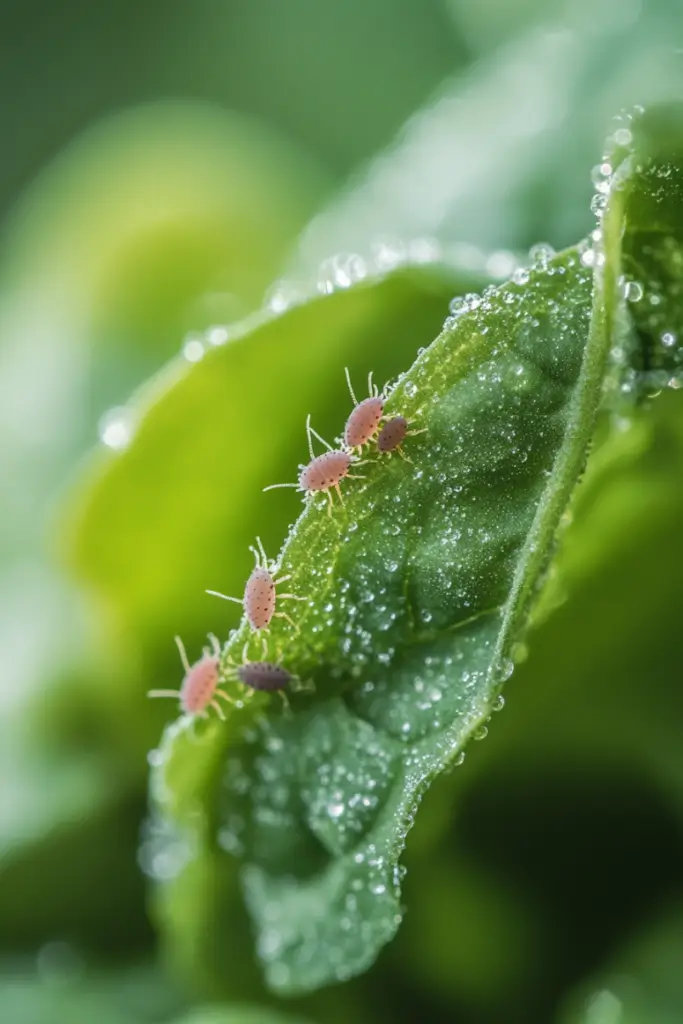
How to Control Aphids on Spinach
If aphids are already affecting your spinach plants, there are several methods to control them, including both organic and chemical approaches.
Here’s a detailed guide to managing aphids:
Organic methods
Soap solution
A simple and effective way to get rid of aphids is by using a soap solution.
The soap disrupts the aphid’s protective coating, leading to dehydration and death.
How to make a soap solution
- Ingredients: Mix 1 tablespoon of mild liquid soap (like dish soap) with 1 quart of water.
- Application: Spray the solution directly onto the affected areas of your spinach plants. Don’t forget to target the undersides of the leaves where aphids often hide.
Neem oil
Neem oil is a natural pesticide that comes from the neem tree. It affects the aphids’ ability to feed, grow, and reproduce.
How to use neem oil
- Ingredients: Mix 1-2 tablespoons of neem oil with 1 quart of water.
- Application: Spray this mixture onto your spinach plants, focusing on areas where aphids are present. Reapply every 7-10 days until the aphid problem is under control.
Predatory insects
Beneficial insects like ladybugs, lacewings, and parasitic wasps naturally prey on aphids.
Introducing these predators into your garden can help keep aphid numbers in check.
How to attract beneficial insects
- Plant attractors: Grow flowers such as daisies, yarrow, and marigolds to attract these helpful insects.
- Direct release: You can also purchase ladybugs or other predatory insects and release them directly onto your plants.
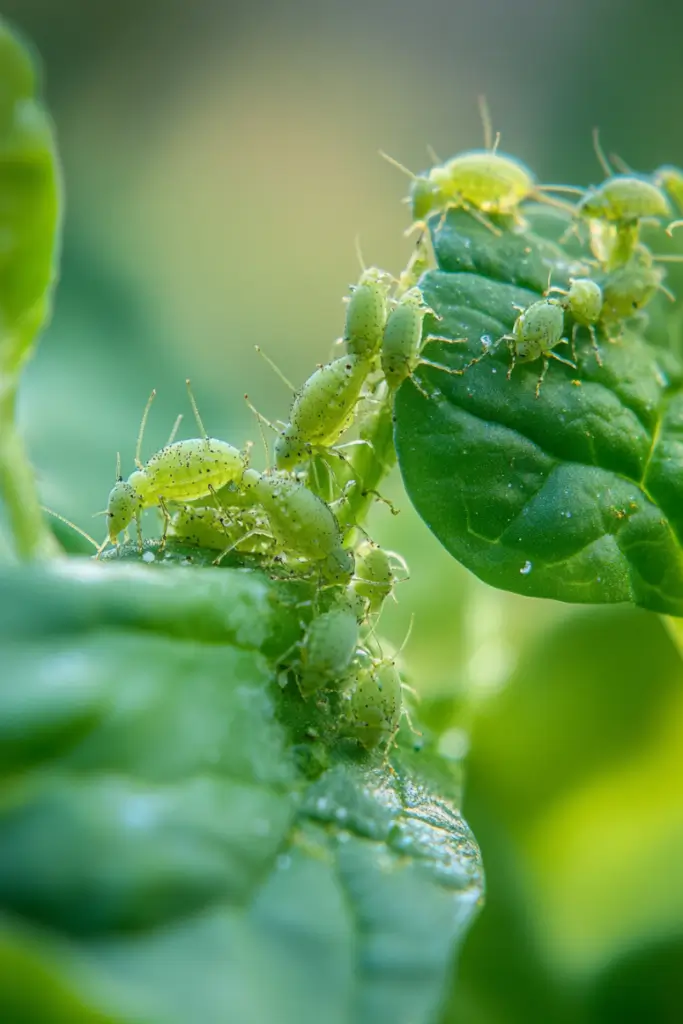
Chemical methods
If organic methods aren’t effective, chemical insecticides can be used.
However, they come with potential downsides, including harming beneficial insects and contaminating your crops.
Using insecticides safely
- Read the label: Always follow the manufacturer’s instructions carefully.
- Application timing: Apply insecticides early in the morning or late in the evening to minimize harm to beneficial insects.
- Use sparingly: Apply only when necessary and use as little as possible to reduce environmental impact.
By following these strategies, you can effectively manage aphid infestations and protect your spinach plants, whether you prefer organic methods or find it necessary to use chemical solutions.
- Read also: Guide to a Pest-Free Garden: Aphid Repellent Plants
- Read also: Bug-Free: Effective Aphid Control Strategies for Indoor Plants
Final Thoughts
Aphids can be a persistent problem for spinach growers, but with the right prevention and control strategies, you can minimize their impact.
By monitoring your plants regularly, using organic methods like soap solutions and neem oil, and attracting beneficial insects, you can keep aphid populations under control without resorting to harsh chemicals.
Healthy, pest-free spinach means a bountiful harvest and a garden that’s thriving.

